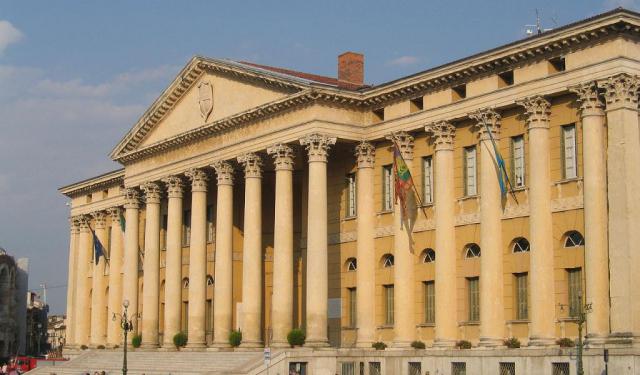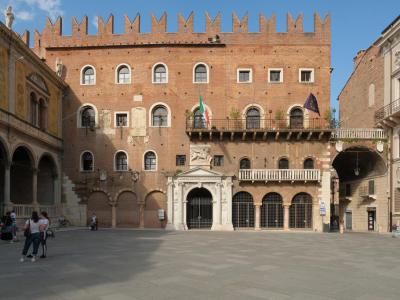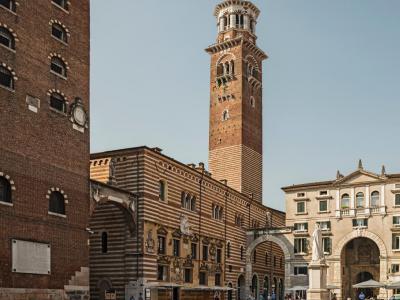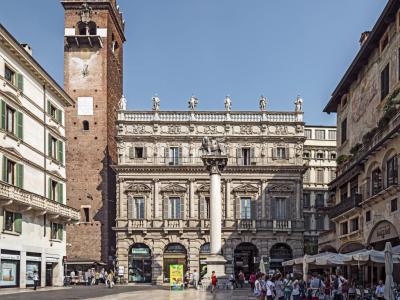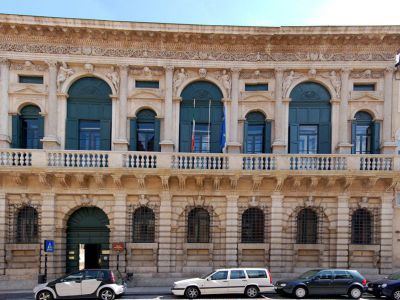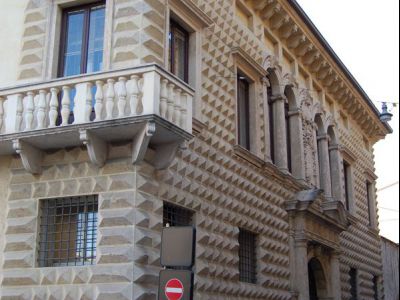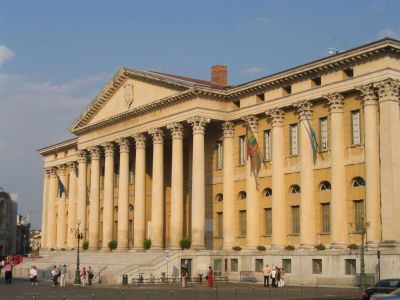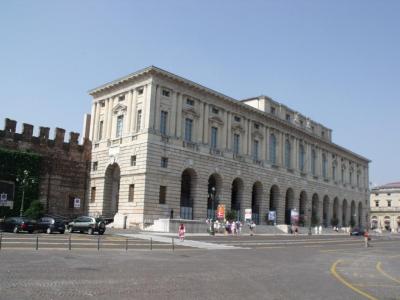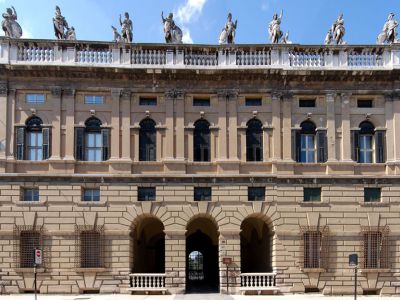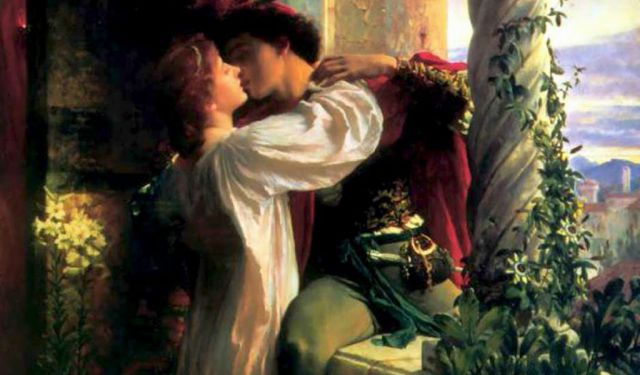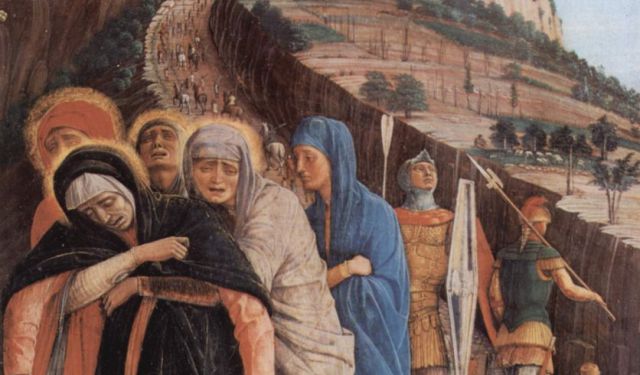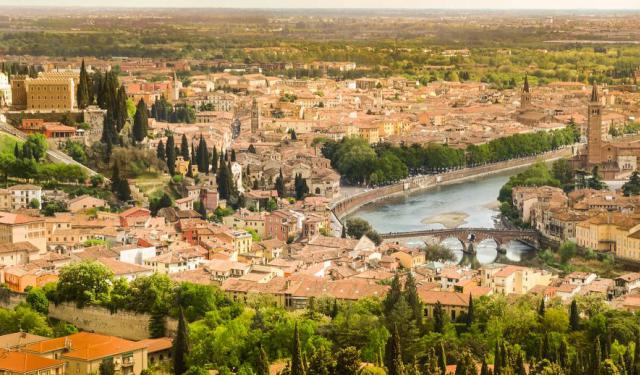Verona's Palaces (Self Guided), Verona
It's no secret that Italy boasts some of the most remarkable palatial architecture in the world. A good portion of it is found in the incredibly charming city of Verona, the long history of which stretches all the way back to ancient Rome and is reflected in an array of Romanesque and Renaissance gates and bridges, but, most notably, the monumental palaces.
Walking the streets of Verona, one may stumble upon the treasures of the Roman period alongside some well-preserved Medieval and later period palatial edifices, such as:
Palazzo del Podestà – an imposing palace built on top of the Roman ruins; among its illustrious guests, over the centuries, have been the likes of Dante, Giotto and other prominent personalities.
Palazzo della Ragione – a historic palace from the 1190s; home to the city's oldest market yard.
Palazzo Maffei – in place since the 15th century; found beneath are the remains of the ancient Roman Capitoline Hill.
Palazzo Bevilacqua – a majestic palace built in the 1530s; currently serves as the headquarters of the Ippolito Pindemonte state technical institute.
Palazzo dei Diamanti (Diamonds Palace) – an impressive structure of 1495; named for its exterior clad in thousands of white marble, diamond-shaped stones, glittering like diamonds when lit.
If you wish to explore these and other architectural delights of Verona in more detail, and to understand why the city is often referred to as "The Gateway to Italy", take this self-guided walking tour.
Walking the streets of Verona, one may stumble upon the treasures of the Roman period alongside some well-preserved Medieval and later period palatial edifices, such as:
Palazzo del Podestà – an imposing palace built on top of the Roman ruins; among its illustrious guests, over the centuries, have been the likes of Dante, Giotto and other prominent personalities.
Palazzo della Ragione – a historic palace from the 1190s; home to the city's oldest market yard.
Palazzo Maffei – in place since the 15th century; found beneath are the remains of the ancient Roman Capitoline Hill.
Palazzo Bevilacqua – a majestic palace built in the 1530s; currently serves as the headquarters of the Ippolito Pindemonte state technical institute.
Palazzo dei Diamanti (Diamonds Palace) – an impressive structure of 1495; named for its exterior clad in thousands of white marble, diamond-shaped stones, glittering like diamonds when lit.
If you wish to explore these and other architectural delights of Verona in more detail, and to understand why the city is often referred to as "The Gateway to Italy", take this self-guided walking tour.
How it works: Download the app "GPSmyCity: Walks in 1K+ Cities" from Apple App Store or Google Play Store to your mobile phone or tablet. The app turns your mobile device into a personal tour guide and its built-in GPS navigation functions guide you from one tour stop to next. The app works offline, so no data plan is needed when traveling abroad.
Verona's Palaces Map
Guide Name: Verona's Palaces
Guide Location: Italy » Verona (See other walking tours in Verona)
Guide Type: Self-guided Walking Tour (Sightseeing)
# of Attractions: 8
Tour Duration: 1 Hour(s)
Travel Distance: 1.6 Km or 1 Miles
Author: Helen
Sight(s) Featured in This Guide:
Guide Location: Italy » Verona (See other walking tours in Verona)
Guide Type: Self-guided Walking Tour (Sightseeing)
# of Attractions: 8
Tour Duration: 1 Hour(s)
Travel Distance: 1.6 Km or 1 Miles
Author: Helen
Sight(s) Featured in This Guide:
- Palazzo del Podestà (Podestà Palace)
- Palazzo della Ragione (Palace of the Reason)
- Palazzo Maffei (Maffei Palace)
- Palazzo Bevilacqua (Bevilacqua Palace)
- Palazzo dei Diamanti (Diamonds Palace)
- Palazzo Barbieri (Barbieri Palace)
- Palazzo della Gran Guardia (Gran Guardia Palace)
- Palazzo Canossa (Canossa Palace)
1) Palazzo del Podestà (Podestà Palace)
The Palazzo del Podestà, also known as the Government Palace, is a medieval building situated in Verona. It's positioned between Piazza dei Signori and the Scaliger Arches. This palace was constructed by the Scaligeri family on the foundation of Roman remains (near the present-day Piazza delle Erbe, which used to be the Roman forum). After its completion, Alberto I della Scala resided there.
Throughout history, the palace hosted numerous distinguished individuals, including notable figures like Dante and Giotto. According to Giorgio Vasari, Giotto created portraits of Cangrande I, but these artworks haven't been discovered. Dante Alighieri, who was exiled from Florence, stayed in this building during his second visit. In fact, the Veronese people refer to the square it overlooks as "Piazza Dante." A statue of the poet stands in the center of that square.
After the Scala dynasty declined, the palace became the headquarters for significant officials during the Republic of Venice. It also housed the offices of the podestà, which contributed to its name. In 1404, a new entrance was constructed, and in 1533, Michele Sanmicheli adorned it with a lion of San Marco placed above.
Throughout history, the palace hosted numerous distinguished individuals, including notable figures like Dante and Giotto. According to Giorgio Vasari, Giotto created portraits of Cangrande I, but these artworks haven't been discovered. Dante Alighieri, who was exiled from Florence, stayed in this building during his second visit. In fact, the Veronese people refer to the square it overlooks as "Piazza Dante." A statue of the poet stands in the center of that square.
After the Scala dynasty declined, the palace became the headquarters for significant officials during the Republic of Venice. It also housed the offices of the podestà, which contributed to its name. In 1404, a new entrance was constructed, and in 1533, Michele Sanmicheli adorned it with a lion of San Marco placed above.
2) Palazzo della Ragione (Palace of the Reason)
The Palazzo della Ragione stands as an important historical palace in Verona, situated between Piazza delle Erbe and Piazza dei Signori. Construction on the Palazzo della Ragione began in 1193. Within three years, significant progress was evident as documents from 1196 refer to a communal palace called "Palacium Communis Veronae." The initial design aimed for a modest and fortified structure with four corner towers: Torre dei Lamberti, a tower at the Chapel or Torrazzo corner between Piazza delle Erbe and Via Cairoli, and the Masseria tower at the intersection of Via Cairoli and Via Dante. There might have been another corner tower at Via Dante and Piazza dei Signori, though no evidence exists.
In 1493, the City Council moved to the Loggia in Piazza dei Signori, renaming the palace to Palazzo della Ragione for its judicial role. By the late 16th century, the building's courtyard became a grain market supervised by Venetian officials. Food scarcity and an epidemic in 1576 led to changes, and the courtyard was named "Mercato Vecchio" (Old Market), distinct from the new grain market in Piazza Bra. The Palazzo's market space stored and sold flour to needy families, possibly with organized small spaces and controlled prices.
Visitors have the opportunity to explore the Cortile Mercato Vecchio, the city's oldest market courtyard, featuring an exquisite Gothic staircase crafted from pink marble. Furthermore, individuals can enjoy various exhibitions and free concerts held throughout the year.
In 1493, the City Council moved to the Loggia in Piazza dei Signori, renaming the palace to Palazzo della Ragione for its judicial role. By the late 16th century, the building's courtyard became a grain market supervised by Venetian officials. Food scarcity and an epidemic in 1576 led to changes, and the courtyard was named "Mercato Vecchio" (Old Market), distinct from the new grain market in Piazza Bra. The Palazzo's market space stored and sold flour to needy families, possibly with organized small spaces and controlled prices.
Visitors have the opportunity to explore the Cortile Mercato Vecchio, the city's oldest market courtyard, featuring an exquisite Gothic staircase crafted from pink marble. Furthermore, individuals can enjoy various exhibitions and free concerts held throughout the year.
3) Palazzo Maffei (Maffei Palace)
Palazzo Maffei stands as a historic palace situated in Verona, specifically on the northwestern side of Piazza delle Erbe. The roots of this building can be traced back to the 15th century, though it underwent significant expansion on December 20, 1469, when Marcantonio Maffei, a prominent nobleman, decided to incorporate a third floor. The extensive construction efforts were not concluded until 1668.
The palace boasts a three-story façade that embodies the Baroque architectural style. This façade commences at a slightly elevated position compared to the square itself, allowing glimpses of the remnants of the ancient Roman Capitoline Hill, which later became the site of Piazza delle Erbe.
Moving up, the first floor of the palace exhibits five archways flanked by triangular pediments. Above each archway, there is a window complemented by a graceful balcony. These features are separated by Ionic semi-columns adorned with substantial masks.
Transitioning to the third floor, a similar stylistic approach is retained from the second floor. However, the windows are smaller and paired with simulated framed columns. The uppermost part of the façade takes on the form of a balustrade adorned with six statues representing divinities: Hercules, Jupiter, Venus, Mercury, Apollo, and Minerva. These statues are sculpted from local marble, except for the Hercules, believed to originate from a former ancient temple located on the Roman Capitoline Hill.
Upon venturing inside, one encounters a unique helical stone staircase that winds its way from the underground storerooms all the way up to the roof.
The palace boasts a three-story façade that embodies the Baroque architectural style. This façade commences at a slightly elevated position compared to the square itself, allowing glimpses of the remnants of the ancient Roman Capitoline Hill, which later became the site of Piazza delle Erbe.
Moving up, the first floor of the palace exhibits five archways flanked by triangular pediments. Above each archway, there is a window complemented by a graceful balcony. These features are separated by Ionic semi-columns adorned with substantial masks.
Transitioning to the third floor, a similar stylistic approach is retained from the second floor. However, the windows are smaller and paired with simulated framed columns. The uppermost part of the façade takes on the form of a balustrade adorned with six statues representing divinities: Hercules, Jupiter, Venus, Mercury, Apollo, and Minerva. These statues are sculpted from local marble, except for the Hercules, believed to originate from a former ancient temple located on the Roman Capitoline Hill.
Upon venturing inside, one encounters a unique helical stone staircase that winds its way from the underground storerooms all the way up to the roof.
4) Palazzo Bevilacqua (Bevilacqua Palace)
Located on Corso Cavour is the majestic and beautiful Palazzo Bevilacqua. It was built by architect and engineer Michele Sanmicheli in the 1530s. The fortress is named after an important Italian noble family. Sanmicheli also designed the Palazzo Pompei, the Palazzo Canossa, the Cappella Pellegrini, and the Ponte Nuovo. The building now serves as the headquarters of the state technical institute of Ippolito Pindemonte and hosts art collections from Marco Bevilacqua and Veronese operas.
The building reflects the richness and texture of Bramante design. Large and small bays grace the structure while fluting decorates the keystones, cornices, and arches. As you enter the front doors of the palace, you are greeted by a courtyard that leads to the main living quarters. The ground level of the edifice is stone and is divided by low windows and pillars that feature the busts of Roman warriors. The top floor has a large balcony that is decorated with Greek-style ledges.
Other attractions within walking distance of the Via Palazzo include the Villa InCanto Opera Lirica, the Byblos Art Gallery, the Santi Apostoli, the Monumento a Aleardo Aleardi, the Itaca Gallery, the San Lorenzo, the Museo d'arte, the Astra, and the Arco dei Gavi.
The building reflects the richness and texture of Bramante design. Large and small bays grace the structure while fluting decorates the keystones, cornices, and arches. As you enter the front doors of the palace, you are greeted by a courtyard that leads to the main living quarters. The ground level of the edifice is stone and is divided by low windows and pillars that feature the busts of Roman warriors. The top floor has a large balcony that is decorated with Greek-style ledges.
Other attractions within walking distance of the Via Palazzo include the Villa InCanto Opera Lirica, the Byblos Art Gallery, the Santi Apostoli, the Monumento a Aleardo Aleardi, the Itaca Gallery, the San Lorenzo, the Museo d'arte, the Astra, and the Arco dei Gavi.
5) Palazzo dei Diamanti (Diamonds Palace)
Italy boasts some of the most beautiful palaces in the world and the Palazzo dei Diamanti, or the Palace of Diamonds, follows in this tradition. The impressive structure was designed by Biagio Rosetti and built in 1495. It is very similar in appearance to the fortress in Ferrara that shares the same name. Like many other buildings, the Palazzo suffered extensive damage from World War II and was renovated in 1950.
The building receives it name from the thousands of white marble diamond-shaped stones, of varying sizes, that cover the exterior of the building. The effect that light has on the multi-faceted outer walls does give one the impression that they are looking at diamonds.
The palace includes a portal that has Doric columns on both sides and two mullioned windows on the main floor. Currently, it is the headquarters of AGEC. The building reflects the influence of designer Michele Sanmicheli.
The best way to enjoy the palace is by taking a self-guided walking tour. Other royal residences you can walk to include the Palazzo del Mercato Vecchio, the Palazzo Bevilacqua, the Porta Leoni, the Palazzo dei Diamanti, the Porta Borsari, the Palazzo Canossa, the Palazzo Canossa, and the Ponte Scaligero.
The building receives it name from the thousands of white marble diamond-shaped stones, of varying sizes, that cover the exterior of the building. The effect that light has on the multi-faceted outer walls does give one the impression that they are looking at diamonds.
The palace includes a portal that has Doric columns on both sides and two mullioned windows on the main floor. Currently, it is the headquarters of AGEC. The building reflects the influence of designer Michele Sanmicheli.
The best way to enjoy the palace is by taking a self-guided walking tour. Other royal residences you can walk to include the Palazzo del Mercato Vecchio, the Palazzo Bevilacqua, the Porta Leoni, the Palazzo dei Diamanti, the Porta Borsari, the Palazzo Canossa, the Palazzo Canossa, and the Ponte Scaligero.
6) Palazzo Barbieri (Barbieri Palace)
The Palazzo Barbieri houses Verona's city council. It is situated in front of Piazza Bra, which hosts various shops, eateries, bars, and significant historical structures. Engineer Guiseppe Barbieri was responsible for constructing the palace, initially intended for military purposes. The Neo-Classical building, made of yellow stone, was started in 1836 and finished in 1848. It was initially called the Gran Guardia Nova.
During the war, the Habsburgs utilized the building as a base for Austrian troops. After the war, it became the city government's headquarters. World War II caused damage to the structure. Reconstruction commenced in 1945 and concluded in 1950. The refurbishment included a rounded extension to the back and an expansion in size.
Other notable sites near the palace include the SS. Nazaro e Celso, Rivoli, Teatro Filarmonico, Listòn, Museo Lapidario, APT Arena, Monumento a Vittorio Emanuele II, and San Luca.
For a quick meal, visitors can explore Liston 12, Trattoria Malavoglia, L'Oste Scuro, Il Cenacolo, Trattoria Cappuccini, or the Silver Star. The palace is a common venue for weddings and remains open 24/7 from Sunday to Saturday.
During the war, the Habsburgs utilized the building as a base for Austrian troops. After the war, it became the city government's headquarters. World War II caused damage to the structure. Reconstruction commenced in 1945 and concluded in 1950. The refurbishment included a rounded extension to the back and an expansion in size.
Other notable sites near the palace include the SS. Nazaro e Celso, Rivoli, Teatro Filarmonico, Listòn, Museo Lapidario, APT Arena, Monumento a Vittorio Emanuele II, and San Luca.
For a quick meal, visitors can explore Liston 12, Trattoria Malavoglia, L'Oste Scuro, Il Cenacolo, Trattoria Cappuccini, or the Silver Star. The palace is a common venue for weddings and remains open 24/7 from Sunday to Saturday.
7) Palazzo della Gran Guardia (Gran Guardia Palace)
The Palazzo della Gran Guardia stands as an impressive palace renowned for hosting conferences and art exhibitions. Initially serving as the headquarters and official premises for the city guard, the building was constructed over a lengthy period, starting in 1610 and reaching completion in 1853. Noteworthy for its grand arches, the design of the palace was orchestrated by Domenico Curtoni, who drew inspiration from the architectural concepts of Michele Sanmicheli, a fellow designer. Situated adjacent to the Portoni della Bra on the expansive Piazza Bra, which happens to be Verona's largest city square, the palace holds a prominent position.
Recent exhibitions have showcased the artistic creations of notable figures such as Mantega, hailing from Mantua and Padua. The Piazza Bar in the vicinity boasts a variety of well-frequented cafes, restaurants, and shops that offer enjoyment to visitors. Close by, one can find the Verona Arena, an amphitheater with a seating capacity of up to 22,000 people.
Upon admiring the captivating palace, it is recommended to journey through Via Mazzini to observe the Veronese people partaking in the passeggiata, a leisurely tradition of strolling through one of Verona's most refined shopping avenues.
Regardless of one's interests – be it attending a wine tasting event, a business seminar, or an exhibition featuring paintings from the eighteenth century – the Palazzo della Gran Guardia offers a versatile experience that caters to all. Various hotels situated within walking distance, such as Le Camp Spa and Resort, Verdi, Europa, Diamantino, and Majestic Toscanelli, enhance the convenience for visitors.
Recent exhibitions have showcased the artistic creations of notable figures such as Mantega, hailing from Mantua and Padua. The Piazza Bar in the vicinity boasts a variety of well-frequented cafes, restaurants, and shops that offer enjoyment to visitors. Close by, one can find the Verona Arena, an amphitheater with a seating capacity of up to 22,000 people.
Upon admiring the captivating palace, it is recommended to journey through Via Mazzini to observe the Veronese people partaking in the passeggiata, a leisurely tradition of strolling through one of Verona's most refined shopping avenues.
Regardless of one's interests – be it attending a wine tasting event, a business seminar, or an exhibition featuring paintings from the eighteenth century – the Palazzo della Gran Guardia offers a versatile experience that caters to all. Various hotels situated within walking distance, such as Le Camp Spa and Resort, Verdi, Europa, Diamantino, and Majestic Toscanelli, enhance the convenience for visitors.
8) Palazzo Canossa (Canossa Palace)
The Palazzo Canossa stands as a solid stone palace crafted by the skilled hands of Michele Sanmicheli back in 1527. Although its construction journey commenced in the 16th century, the intricate edifice didn't attain its full form until the 17th century. Nestled between the Porta Borsari and Castello Scaligero, it has secured its status as a cherished spot for tourists. The architectural composition proudly showcases the Mannerist style, a reflection of Sanmicheli's artistic vision. This remarkable creation is part of a quartet of buildings conceived by the same designer within the city's confines.
Like many of its counterparts in the city, the palace bore the brunt of World War II's turmoil, leaving some scars in its wake. Amidst the destruction that befell Verona, the artworks of Gian Battista Tiepolo that adorned the walls suffered an unfortunate fate. Yet, despite the ravages of war, numerous other facets of the palace have persevered through time.
Explorers of the palace are in for a treat when they lay their eyes on the entranceway, adorned with stately marble columns, a welcoming portico, gracefully framed arched windows, and a gallery embellished with mythical creatures. Throughout its history, illustrious figures such as Alexander I of Russia, Napoleon Bonaparte, and Francis I of Austria have graced the halls of this distinguished residence.
The palace's strategic location places it in proximity to a tapestry of captivating landmarks. Among the nearby attractions that complement the allure of Palazzo Canossa, one can relish the presence of the Arco dei Gavi, the Palazzo Scannagatti, the Basilica SS. Apostoli, the S. Lorenzo, the Museo Civico di Castelvecchio, the Byblos Art Gallery, the Palazzo Bevilacqua, and the Ponte Scaligero.
Like many of its counterparts in the city, the palace bore the brunt of World War II's turmoil, leaving some scars in its wake. Amidst the destruction that befell Verona, the artworks of Gian Battista Tiepolo that adorned the walls suffered an unfortunate fate. Yet, despite the ravages of war, numerous other facets of the palace have persevered through time.
Explorers of the palace are in for a treat when they lay their eyes on the entranceway, adorned with stately marble columns, a welcoming portico, gracefully framed arched windows, and a gallery embellished with mythical creatures. Throughout its history, illustrious figures such as Alexander I of Russia, Napoleon Bonaparte, and Francis I of Austria have graced the halls of this distinguished residence.
The palace's strategic location places it in proximity to a tapestry of captivating landmarks. Among the nearby attractions that complement the allure of Palazzo Canossa, one can relish the presence of the Arco dei Gavi, the Palazzo Scannagatti, the Basilica SS. Apostoli, the S. Lorenzo, the Museo Civico di Castelvecchio, the Byblos Art Gallery, the Palazzo Bevilacqua, and the Ponte Scaligero.
Walking Tours in Verona, Italy
Create Your Own Walk in Verona
Creating your own self-guided walk in Verona is easy and fun. Choose the city attractions that you want to see and a walk route map will be created just for you. You can even set your hotel as the start point of the walk.
Romeo and Juliet Tour
Few cities in the world capture romance like Verona, the setting that inspired Shakespeare’s Romeo and Juliet. Each year, thousands of visitors stroll the cobbled streets, imagining the star-crossed lovers meeting under moonlight. For romantics, literature enthusiasts, and curious travelers, the Romeo and Juliet Tour offers an unforgettable journey through history, myth, and passion.
Long... view more
Tour Duration: 2 Hour(s)
Travel Distance: 3.9 Km or 2.4 Miles
Long... view more
Tour Duration: 2 Hour(s)
Travel Distance: 3.9 Km or 2.4 Miles
Verona's Museums and Galleries
Art and history have been the pillars supporting the elegant city of Verona for centuries. Among other things here, you will find the abundance of grand museums and galleries holding unique collections of art and cultural treasures suiting all tastes.
Whatever your interest – ancient or modern art, archaeology, frescoes, Roman inscriptions, natural history, antique furniture, or wine – be... view more
Tour Duration: 1 Hour(s)
Travel Distance: 2.3 Km or 1.4 Miles
Whatever your interest – ancient or modern art, archaeology, frescoes, Roman inscriptions, natural history, antique furniture, or wine – be... view more
Tour Duration: 1 Hour(s)
Travel Distance: 2.3 Km or 1.4 Miles
Verona Introduction Walking Tour
As William Shakespeare once wrote, “Two households, both alike in dignity, in fair Verona, where we lay our scene…” — a line that has forever entwined the city’s name with timeless romance and drama.
Verona is one of northern Italy’s most storied cities, shaped by ancient tribes, Roman expansion, medieval rivalries, and later cultural prosperity that earned it UNESCO World Heritage... view more
Tour Duration: 3 Hour(s)
Travel Distance: 4.0 Km or 2.5 Miles
Verona is one of northern Italy’s most storied cities, shaped by ancient tribes, Roman expansion, medieval rivalries, and later cultural prosperity that earned it UNESCO World Heritage... view more
Tour Duration: 3 Hour(s)
Travel Distance: 4.0 Km or 2.5 Miles
The Most Popular Cities
/ view all
